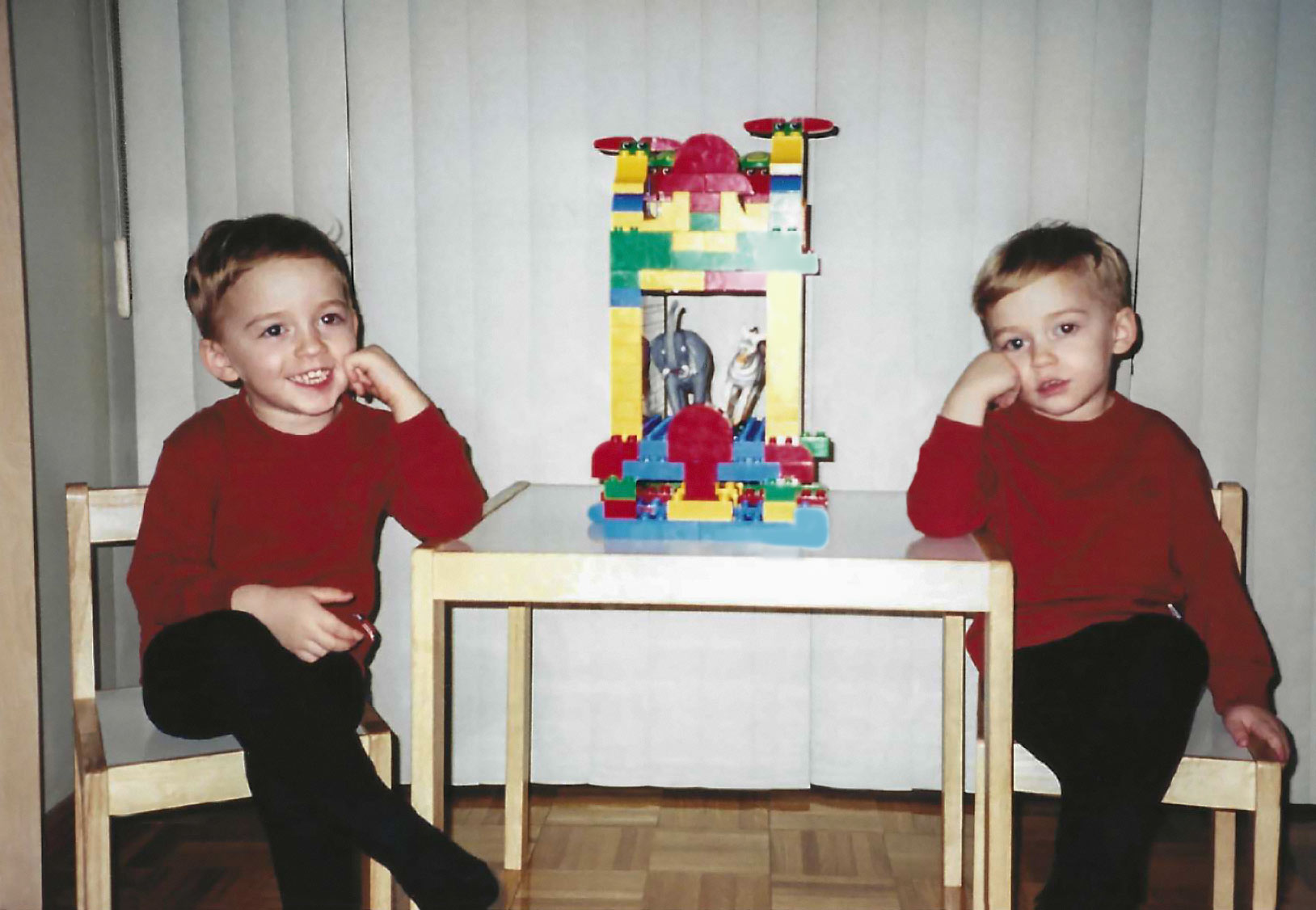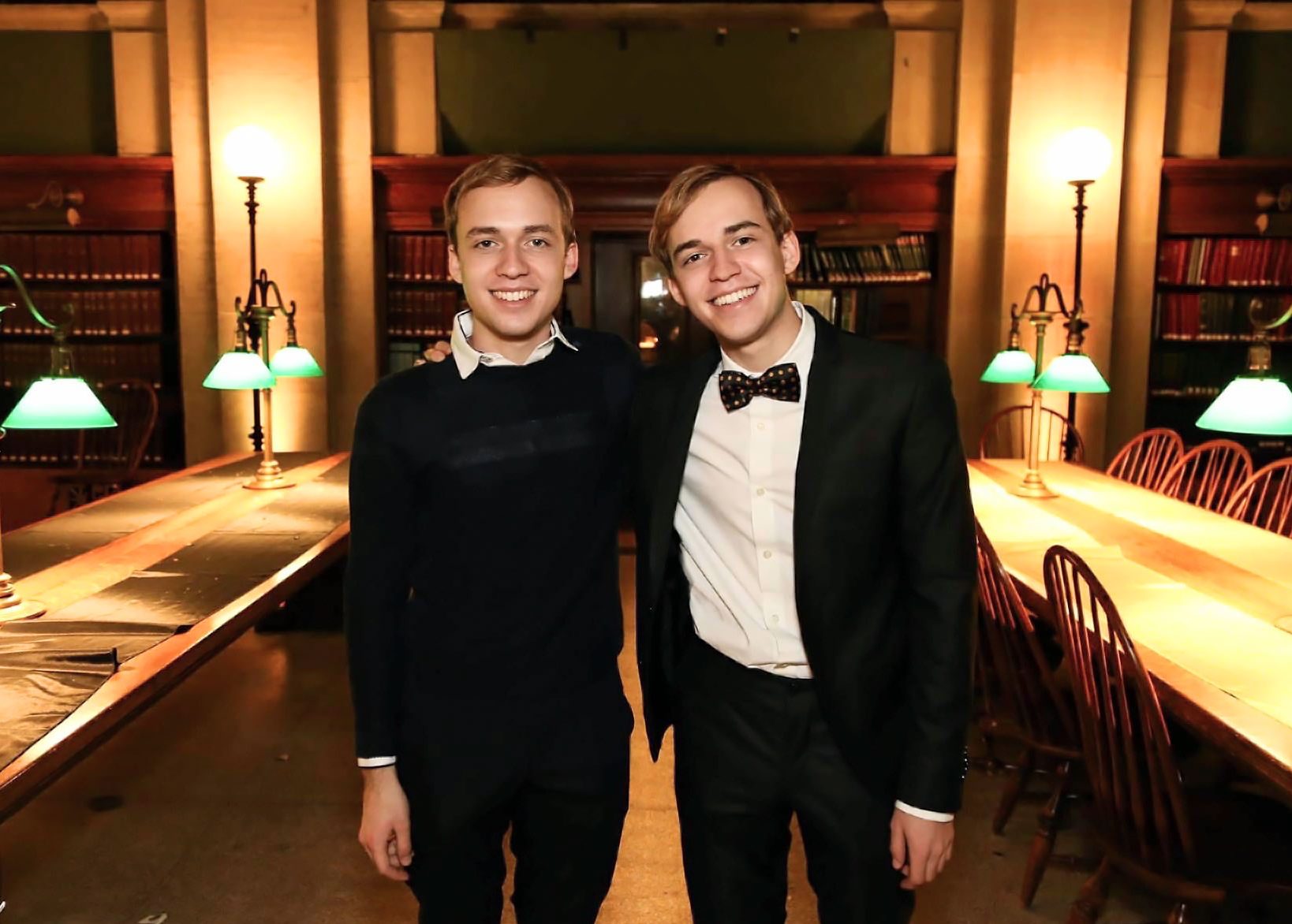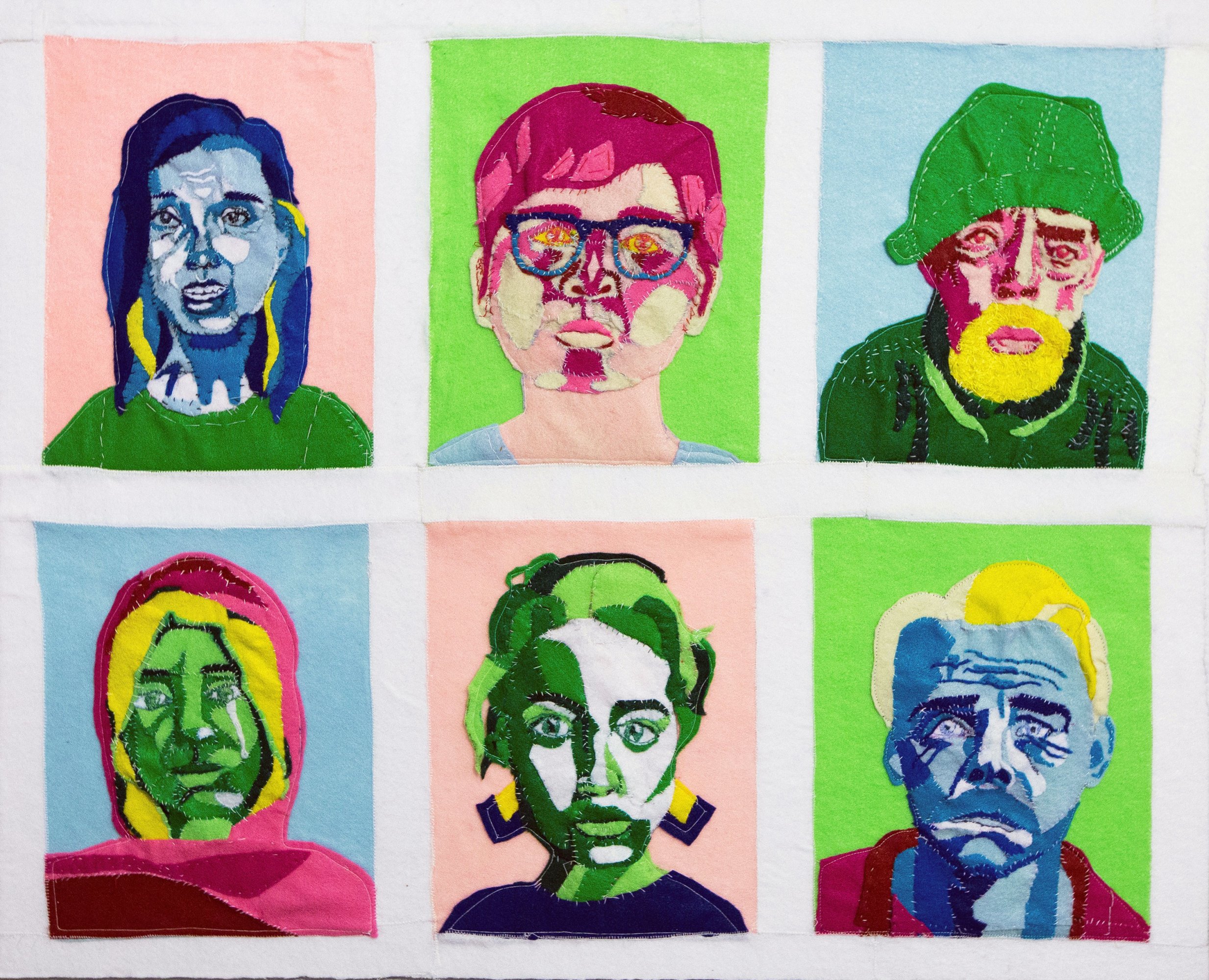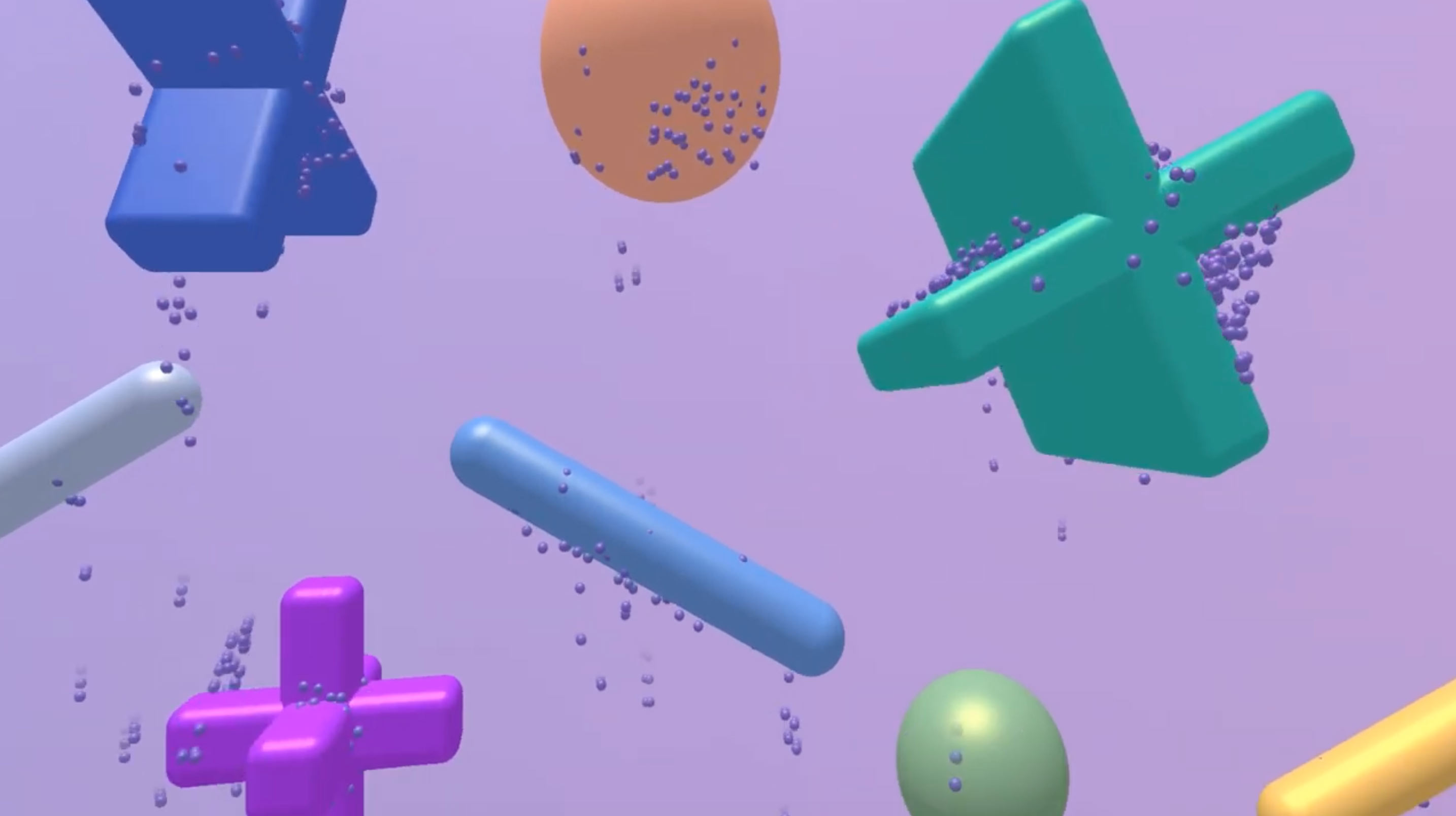Crafting our path
The first project we remember working on together was drawing scenes from the picture books that our mom brought with her when she immigrated from the USSR. Working on large CVS poster boards, we drew porcupines crawling in forests and swans swimming in lakes. At six years old, sitting at our two-foot-tall, colored-pencil-covered table, we’d swoosh our hands back and forth to create large expanses of grass and water, making sure to divide the coloring evenly between the two of us. Our mom taught us to use colored paper strips and Elmer’s glue to create faux frames for our finished posters, which we hung in our room. We’d each make two of the four sides of the frame.


Our collaborative creations continued as we grew. In fifth grade, we had a massive friendship bracelet phase, making every single type in our instruction book—from the basic row and chevron patterns to the most complicated tiki statue design. We would each tackle one type of bracelet and then swap knowledge, teaching each other what we’d just learned.
As middle schoolers, we entered a papier-mâché phase. Inspired by the Studio Ghibli films we watched, one of us made papier-mâché Totoros. The other made papier-mâché matryoshka dolls. And then we combined our ideas by making papier-mâché matryoshka dolls, painted to look like Totoros.
In high school, we began knitting, starting with sweaters and hats. But then, inspired by Vi Hart’s amazing mathematical art, we knit and combined various mathematical shapes to create hexaflexagons and Platonic solids. To manage the complexity, we divided the tasks, each knitting half of the necessary polygonal faces before we sewed all the pieces together.
We always worked together the same way. Bouncing ideas off each other, we came up with plans that neither one of us would have thought of alone. Dividing tasks, we accomplished and learned more together than either one of us would have individually. And working together was always fun!
At MIT, we knew we wanted to continue collaborating, and we started by working together to zero in on a major that would encompass our vast array of interests. We liked making things, so maybe Course 2 (mechanical engineering). We liked art and design, so maybe Course 4 (architecture). We liked math, so maybe Course 18 (mathematics) or 6 (computer science). And we liked stories and analyzing them, so maybe CMS (comparative media studies).
Although we took introductory classes in all of these departments, it was working together as artists in OpenMind::OpenArt, a gallery project centered on mental health and wellness, that ultimately helped us choose our major. For our piece, we wanted to explore the concept of empathy through a series of portraits made entirely out of pieces of fabric sewn together. After some trial and error, we discovered that the best way to do this was to hand-draw the portraits and then, using them as a reference, slowly and meticulously cut out every section of fabric from sheets of felt. Holding two tiny, abstractly shaped felt pieces at a time, we sewed them together by hand, poking our fingers more times than we could count. We each made three of the six portraits, and always helped each other in complicated sections that needed more than two hands to sew together.

This experience was so fulfilling that we decided to major in Course 21E (humanities and engineering), a very flexible program that lets you combine any humanities field with any engineering field. (We were surprised to learn that only 0.26% of MIT undergraduates—a total of about three students per year—choose it.) After finishing our felt portrait series, we knew we wanted to continue making projects that tell stories. With CMS as our humanities field and Course 6 as our engineering field, we could develop our storytelling and interactive media skills and build our technical expertise in things like computer graphics—all of which would help prepare us for careers in the animation industry.
We have always been mesmerized by 2D animation—how flat drawings can come to life when played in sequence. So we cross-registered in the animation department at the Massachusetts College of Art and Design twice in our sophomore year, learning things like hand drawing with a light table, experimental sand animation, and digital animation. After taking these courses, we made a collaborative short film, using a simple color palette—one character was orange, the other purple—and our usual systematic approach. We each designed half the backgrounds, all in turquoise, and each animated one character.

In our junior year, we conducted research in the MIT Game Lab, making digital assets for a large-scale puzzle hunt, and helped a researcher at the MIT Media Lab make 2D character animations for an app that helps kids learn to read. We again approached it collaboratively, dividing our tasks by puzzle or animation, and giving each other feedback throughout the process.
As seniors, we finally got to take the computer graphics course we were so looking forward to, learning many amazing ways to visually express the world using code—for example, with ray tracing and particle simulation. For our very last semester at MIT, we constructed independent studies in computer graphics so we could practice and implement various simulation and rendering techniques and use our storytelling and animation skills to create a short film, depicting the formation of rain in an imaginative way. When covid-19 abruptly forced us to leave campus and our friends, we were glad to be able to continue our independent studies—and continue collaborating on our film—remotely. In fact, since the class was already completely in our hands, the transition was very smooth, despite the chaos around us. And that underscored for us the benefits we gained from our unique academic decisions.
There is a poetic feeling to the way our senior year unfolded. We had started our collaborative artistic journey together, drawing from picture books at home by our mom’s side. And there we were in the spring, at home with our mom again as we closed our undergraduate studies together, collaboratively “drawing” by coding.
Not many MIT students major in 21E, cross-register at MassArt, do artistic research, or create independent studies. But with our unique history of collaborating for pretty much all our lives, perhaps it was inevitable that we would work together to craft our own path at MIT.
Keep Reading
Most Popular
Large language models can do jaw-dropping things. But nobody knows exactly why.
And that's a problem. Figuring it out is one of the biggest scientific puzzles of our time and a crucial step towards controlling more powerful future models.
The problem with plug-in hybrids? Their drivers.
Plug-in hybrids are often sold as a transition to EVs, but new data from Europe shows we’re still underestimating the emissions they produce.
Google DeepMind’s new generative model makes Super Mario–like games from scratch
Genie learns how to control games by watching hours and hours of video. It could help train next-gen robots too.
How scientists traced a mysterious covid case back to six toilets
When wastewater surveillance turns into a hunt for a single infected individual, the ethics get tricky.
Stay connected
Get the latest updates from
MIT Technology Review
Discover special offers, top stories, upcoming events, and more.